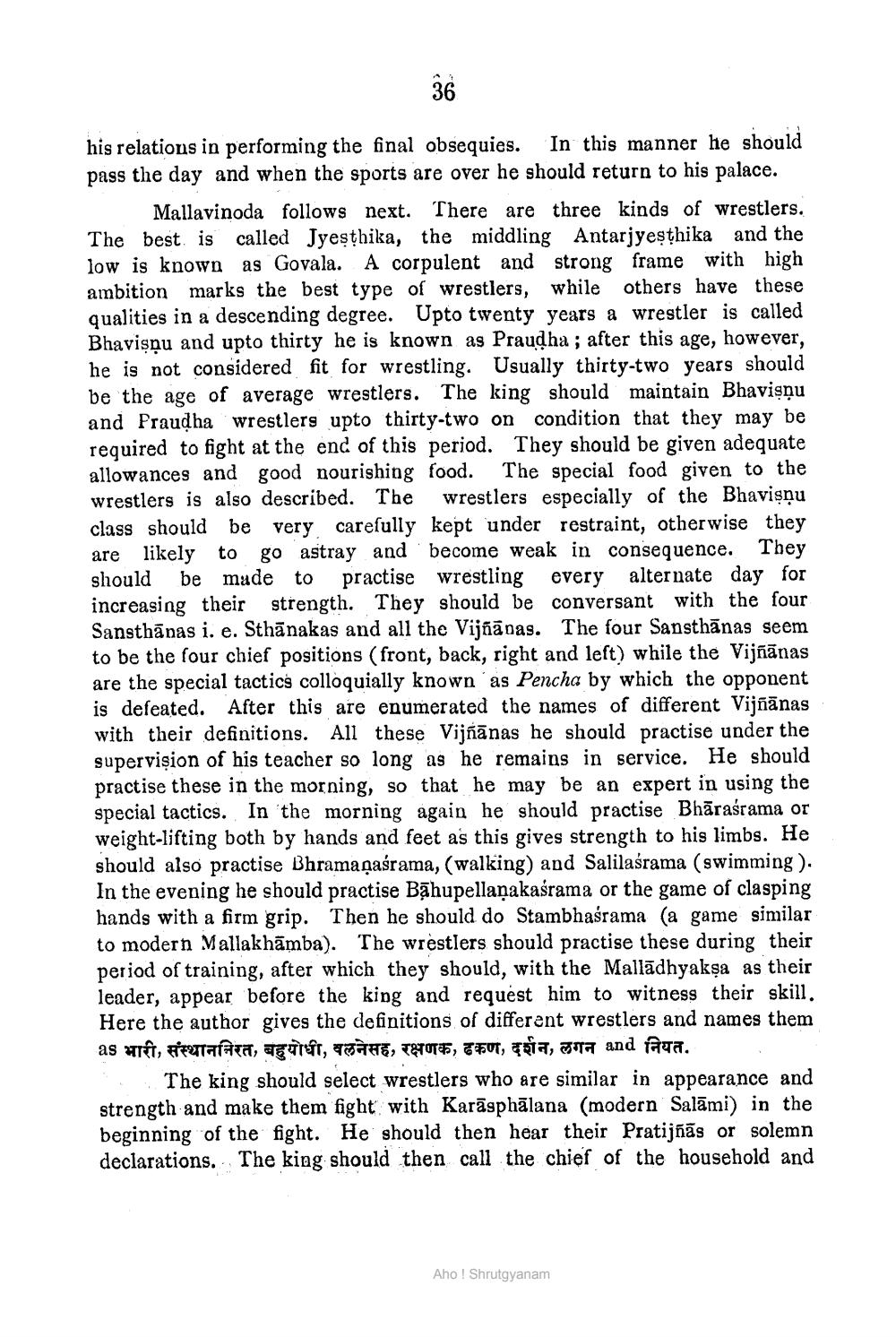________________
36
his relations in performing the final obsequies. In this manner he should pass the day and when the sports are over he should return to his palace.
Mallavinoda follows next. There are three kinds of wrestlers. The best is called Jyesthika, the middling Antarjyesthika and the low is known as Govala. A corpulent and strong frame with high ambition marks the best type of wrestlers, while others have these qualities in a descending degree. Upto twenty years a wrestler is called Bhavisņu and upto thirty he is known as Praudha; after this age, however, he is not considered fit for wrestling. Usually thirty-two years should be the age of average wrestlers. The king should maintain Bhavişņu and Praudha wrestlers upto thirty-two on condition that they may be required to fight at the end of this period. They should be given adequate allowances and good nourishing food. The special food given to the wrestlers is also described. The wrestlers especially of the Bhavisņu class should be very carefully kept under restraint, otherwise they are likely to go astray and become weak in consequence. They should be made to practise wrestling every alternate day for increasing their strength. They should be conversant with the four Sansthānas i. e. Sthānakas and all the Vijñānas. The four Sansthānas seem to be the four chief positions (front, back, right and left) while the Vijñānas are the special tactics colloquially known as Pencha by which the opponent is defeated. After this are enumerated the names of different Vijñānas with their definitions. All these Vijñānas he should practise under the supervision of his teacher so long as he remains in service. He should practise these in the morning, so that he may be an expert in using the special tactics. In the morning again he should practise Bhārasrama or weight-lifting both by hands and feet as this gives strength to his limbs. He should also practise Bhramagaśrama, (walking) and Salilaśrama (swimming ). In the evening he should practise Bāhupellaņakaśrama or the game of clasping hands with a firm grip. Then he should do Stambhasrama (a game similar to modern Mallakhāmba). The wrestlers should practise these during their period of training, after which they should, with the Mallādhyaksa as their leader, appear before the king and request him to witness their skill. Here the author gives the definitions of different wrestlers and names them as भारी, संस्थाननिरत, बहुयोधी, वलनेसह, रक्षणक, ढकण, दर्शन, लगन and नियत.
The king should select wrestlers who are similar in appearance and strength and make them fight with Karāsphālana (modern Salāmi) in the beginning of the fight. He should then hear their Pratijñās or solemn declarations. The king should then call the chief of the household and
Aho! Shrutgyanam




